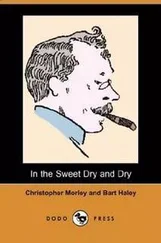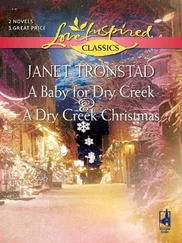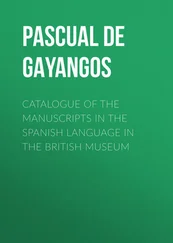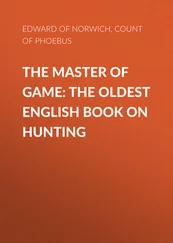The sketchiness of our understanding of OE dry-point glossing has also been severely aggravated by the fact that dry-point writing is usually not readily visible during casual perusal of a MS. Unless a researcher specifically looks out for dry-point writing, there is a good chance that most of the dry-point writing will go unnoticed. The strong contrast offered by ink writing automatically causes the human perception to mask out less extreme contours. As soon as researchers are prepared to see dry-point writing and know what to expect visually, chances of seeing such material increase dramatically.
2.2.3 Deformational Writing Outside the Manuscript Context
Outside the MS context, a sizable corpus of deformational writing from the Anglo-Saxon period has come down to us in the form of inscriptions. Both letters of the Roman alphabet and runes were carved into physical objects made of rock, metal, bone or wood throughout the Anglo-Saxon period.1 However, I have not been able to establish a direct link between that type of epigraphic deformational writing and dry-point writing in Anglo-Saxon MSS. An indirect reflex of the Anglo-Saxon practice of inscribing runic letters onto objects may be present in runic dry-point additions to Anglo-Saxon MSS, though. It is striking to see that a number of dry-point additions from different Anglo-Saxon MSS are in fact composed of runes (cf. below). It is conceivable that at least some of these short inscriptions may have been added in imitation of the Anglo-Saxon practice of inscribing objects in runes, especially since several of the MS specimens seem to represent personal names, which is reminiscent of a whole number of Anglo-Saxon runic inscriptions, such as the Hartlepool name-stones, the Chester-le-Street stone or the Thames scramasax, in which personal names are added without any explicit description of the role that the named person plays with respect to the object itself (cf. Page 1999: 50, 58 and 113). It is to be hoped that further discoveries of similar runic entries in Anglo-Saxon MSS will allow us to arrive at a clearer picture of this phenomenon; for OHG dry-point runic writing in continental MSS, see Nievergelt (2011a).
An interesting example of Insular deformational writing outside MSS, whose purpose was probably not epigraphic but veritably practical, is presented by the Derrynaflan Paten inscriptions (cf. Brown 1993)Derrynaflan Paten. The Derrynaflan Paten – a large decorated silver dish used for holding the bread in eucharistic services – was found during metal-detecting activities at the ecclesiastical site of Derrynaflan, County Tipperary (IE) in 1980. It forms part of a hoard of valuable liturgical metalwork, now kept in the National Museum of Ireland in Dublin. During conservation works on the Paten, a series of half-uncial letters was discovered on the rim, on the rivet-stud cups and on the frames carrying the filigree panels set upon the rim. They are believed to have served as assembly marks for the 8 th-c. artisan or artisans that built it. Interestingly, the lettering on the rim and on the (remaining) rivet-stud cups match, but the letters on the frames “do not conform in a straightforward fashion, entailing ambiguity as to the proposed original assembly” (Brown 1993: 162). A detailed palaeographical analysis of the letter forms allowed for a dating to the second half of the 8 thc. Surprisingly, the rim also features a tiny L. inscription, which is only approximately 1 mm high. Brown (1993: 165) assumes that “[t]he scribe must, presumably, have been working blind at that scale”, but the writing even features wedges, giving the minute inscription a “degree of formality”. Brown’s reading is only partly successful and the microscopic enlargements that she provides (Brown 1993: 166) make one wonder whether the inscription was ever intended to be read; she deciphers omne et ig(itur) or omne et g(ratia) and O creator … n … omnium . Brown (1993: 165) finds some parallels in Bald’s Leechbook and in Lacnunga , where the writing of religious texts on patens is advised in spells against “fever”, “elfin tricks” and “temptations of the devil”, respectively. If the Derrynaflan Paten inscriptions are considered in this context, the legibility of the inscription may not have been considered necessary by the scribe; instead, the spiritual gesture alone may have served his or her purpose. Apart from two photographic details of the L. inscription, Brown (1993: 166) supplies a hand-drawn facsimile of the L. inscription as well as hand-drawn facsimiles of the letter forms and symbols found on the rim, the frames and the cups (Brown 1993: 162–163).
2.2.4 Ink, Pencil, Dry-Point
The extant amount of dry-point writing in Anglo-Saxon MSS that we know of clearly indicates that dry-point writing enjoyed a different status than ink writing in Anglo-Saxon England. No passages of any sizeable length in dry-point writing have been discovered so far in Anglo-Saxon MSS. The only sizeable amount of dry-point writing that we know from medieval MSS can be associated with the practice of glossing L. texts in L. or in a vernacular language. However, even in this context, dry-point writing clearly is not used to the same extent as ordinary ink writing: Even the MSS with the largest number of edited dry-point glosses feature no more than ca. 600 dry-point glosses, while some Anglo-Saxon MSS feature more than 5,000 OE ink glosses and many thousand L. ink glosses on top of that. Clearly, dry-point writing was the exception, writing in ink the rule.
Motivations behind dry-point writing remain something of a puzzle: Why should glossators choose to write without ink and produce writing that is so difficult to see?dry-point writingmotivation As pointed out above, there is no documented example of a continuous OE gloss in dry-point, nor are there examples of glossaries written in dry-point. The observation that dry-point writing in connection with OE glosses was restricted to the domain of the occasional gloss points to the possibility that glossing in dry-point may have been more of a spontaneous activity whereas a dedicated or planned activity, such as writing a continous interlinear gloss or a glossary, would by default have been carried out in ink. Since our knowledge of dry-point writing is still highly incomplete, however, we have to be careful about drawing too general conclusions as long as we cannot even estimate what fraction of the overall picture we have uncovered so far.
It has been argued that dry-point writing may have been employed to preserve the neatness of the costly MSS, e.g. in the “Maihingen Gospels”Augsburg, Universitätsbibliothek Cod. I.2.4° 2 [1/K:287*], produced in 8 th-c. Echternach:
Bei der Lektüre einzelner lateinischer Passagen müssen Echternacher Mönche auf sprachliche Schwierigkeiten gestoßen sein. Um sich den Sinn dieser Stellen besser einprägen zu können, taten sie, was auch heute noch jeder Schüler tun würde: sie schrieben die Übersetzung schwieriger Ausdrücke in ihrer Muttersprache unauffällig in das Buch hinein. Da sie sich scheuten, den kunstvoll kalligraphierten und überdies als heilig betrachteten Text durch ihre Zutaten zu entweihen, nahmen sie den Griffel und ritzten die Wörter als Blindglossen unmerklich in das Pergament ein. (Schroeder 1979b: 397)1
If so, the preference of the stylus over the quill would have been motivated by the great respect that the glossators had for the aesthetic integrity of the written L. text. A similar interpretation is discernible in Meyer (1966: 224): “als Beschreibstoff diente der Griffel auch […] zum Eintrag von Notizen u[nd] Glossen, die nicht besonders hervortreten sollten”,2 or in Graham (2009: 17): “Possibly the drypoint glossator sought to avoid having the gloss interfere with or distract attention from the main text, as an ink gloss might.” In opposition to such conclusions, Rusche (1994: 196) argues that “this is refuted by the prevalence of ink glossing in Anglo-Saxon manuscripts, even those considered works of art such as the Lindisfarne Gospels.” Rusche’s observation is correct, insofar as Aldred’s glossing of the “Lindisfarne Gospels”London, British LibraryCotton Nero D. iv[K:165] was indeed carried out boldly in ink. However, we must be careful when we consider Anglo-Saxon motivations, as they are not readily available and understandable to us. What may be one monk’s conviction in 8 th-c. Echternach does not have to be shared by Aldred in 10 th-c. Durham. It must be assumed that Aldred deliberately added his continuous OE gloss in ink, as he was most definitely convinced that he proceeded with God’s and St Cuthbert’s approval, as he states in his colophon: “⁊ Aldred presbyter indignus et misserrimus mið godes fultu’mæ ⁊ sancti cuðberhtes hit of’ glóesade ón englisc.”3 Aldred’s glossing in ink, however, cannot be taken as evidence for the attitude of every Anglo-Saxon glossator from the 8 ththrough to the 11 thc., either. It may well be that in some cases considerations of concealment really played a role when writing in dry-point, but it would have to be argued for individual gloss hands in individual MSS.
Читать дальше












